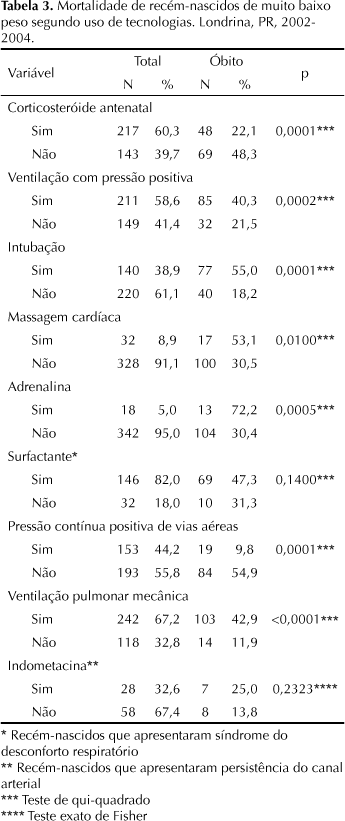OBJECTIVE: To assess inpatient mortality rate of very-low-birth-weight neonates, their clinical progression and factors associated with mortality. METHODS: Longitudinal study including 360 neonates weighing 500-1500 g who were born in Londrina, Southern Brazil, from January 1, 2002 to June 30, 2004. Data were collected through interviews with the mothers and from medical records and follow-up of neonates during hospitalization. Chi-square test was used to determine the association between variables. Statistically significant variables were selected to the logistic regression model and the level of significance adopted was 5%. RESULTS: Mortality rate was 32.5%. In bivariate analysis, the following variables were associated with death: no prenatal use of corticosteroids; no hypertension/preeclampsia; labor; vaginal delivery; non-cephalic presentation; Apgar scores < 3 at the first and fifth minutes; Clinical Risk Index for Babies score > 5; male sex; weight < 750 g; gestational age < 28 weeks; resuscitation procedures in the delivery room; respiratory distress syndrome; pneumothorax; intracranial hemorrhage; and mechanical ventilation. In the logistic regression, the following variables were still considered risk factors: low income; no prenatal use of corticosteroids; no use of continuous positive airway pressure. CONCLUSIONS: Despite technology advances, very-low-birth-weight neonates mortality is high in Brazil compared with developed countries. Prenatal use of corticosteroids should be encouraged to reduce morbidity and mortality of very-low-birth-weight neonates.
Infant, very low birth weight; Risk factors; Neonatal mortality; Postneonatal mortality; Maternal-child health services; Longitudinal studies





